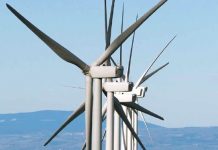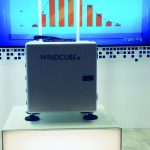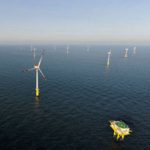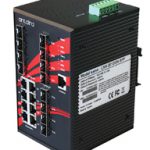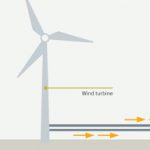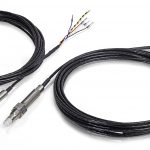Duke Energy Renewables recently ordered 24 IdentiFlight® units to be installed at its Top of the World Windpower Project in Wyoming as part of its comprehensive avian protection program.
The system from IdentiFlight International blends artificial intelligence with high-precision optical technology to detect eagles and prevent them from colliding with rotating wind-turbine blades. Duke Energy Renewables is the first wind operator to commercially deploy this technology.
“Duke Energy understands the importance of balancing the need for clean, renewable energy while protecting wildlife, including the iconic bald and golden eagles,” said Tim Hayes, environmental director, Duke Energy Renewables. “Since Top of the World began operations, we have tested a variety of techniques and technologies to reduce impacts to eagles. The IdentiFlight system has shown great promise for effectively reducing eagle collisions.”
The Top of the World site has been a part of the IdentiFlight innovation story from the beginning, with early versions installed and modified at the facility during development of the technology.
“Duke Energy Renewables has been an amazing partner throughout the testing and development of the IdentiFlight technology and has proven to be in the forefront of the industry in addressing this critical issue,” said Tom Hiester, president of IdentiFlight International. “Avian collisions with turbine blades have been an impediment to growth in the wind industry. IdentiFlight was developed to address this problem and promote the successful coexistence of avian wildlife and wind energy.”
%%0318-Duke%%
Recently, an array of IdentiFlight units underwent third-party independent testing at Top of the World during elevated eagle activity. The testing focused on the system’s ability to detect and classify golden eagles and other large raptors within a timeframe that supports the use of informed curtailment to minimize collision risk. The full report is expected to be published in a scientific journal early next year.
“The real-world testing conducted by The Peregrine Fund and the American Wind Wildlife Institute (AWWI) produced compelling results that validated IdentiFlight’s accuracy and effectiveness,” Hayes said. “It is a great addition to the many strategies we employ to protect wildlife and their habitats.”
“AWWI is excited by the promise of innovative technologies to produce meaningful reductions in wind-energy impacts to wildlife,” said AWWI Executive Director Abby Arnold. “Through AWWI’s collaboration with a variety of stakeholders, we will continue evaluating cutting-edge solutions for raptors and bats, and we see these technologies as having great potential to help wind power achieve full conservation value.”
How IdentiFlight Works
Automatic detection and species determination occur within seconds for birds flying within a 1-kilometer hemisphere around an IdentiFlight tower. If an eagle’s speed and flight path indicate risk of collision, an alert is generated to shut down that specific wind turbine. By providing highly targeted, informed and objective curtailment decisions, unnecessary and costly interruptions are avoided, and conservation of protected species is achieved.
Source: Duke Energy Renewables
For more information, go to www.duke-energy.com/renewable


















